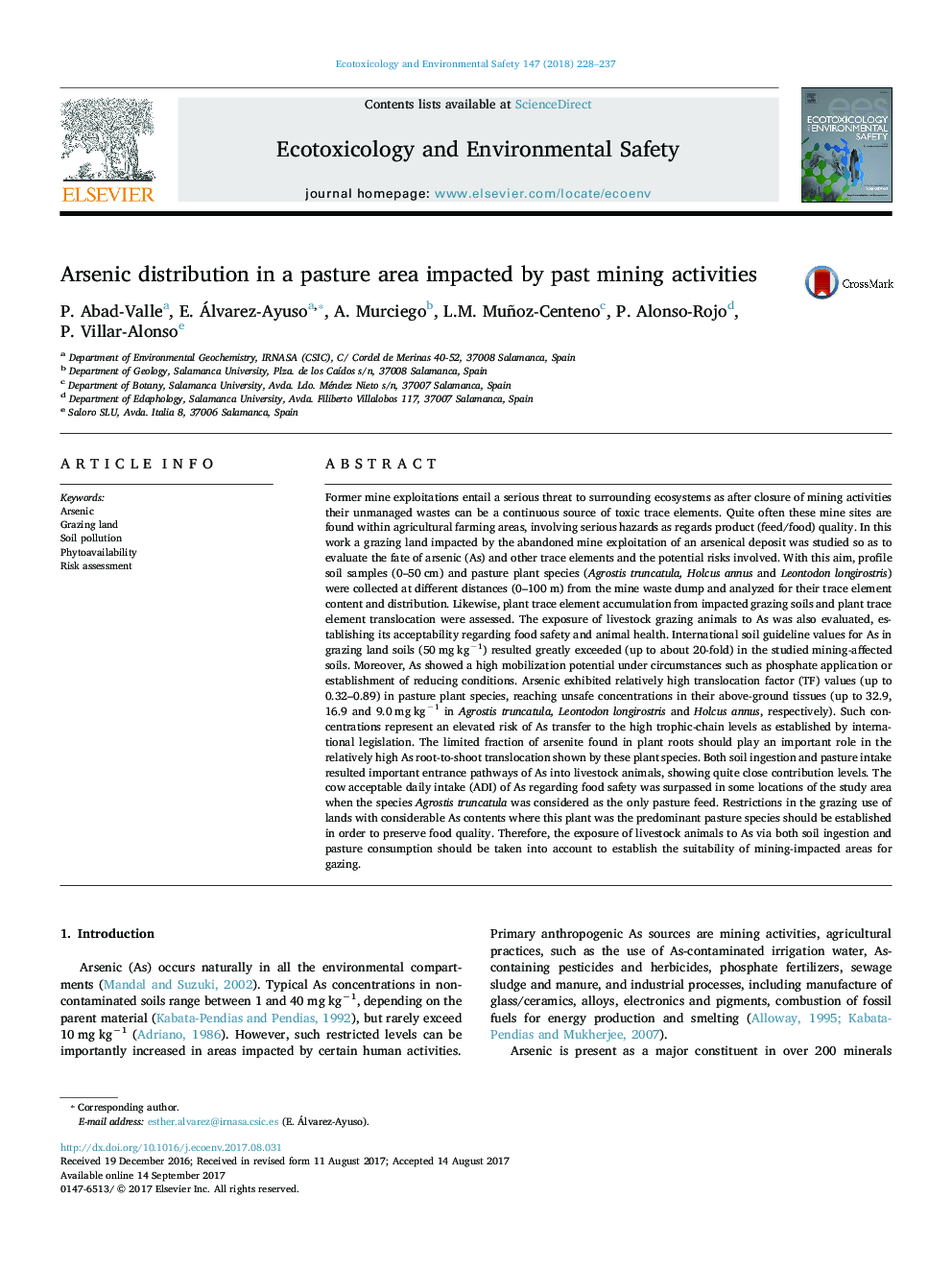| کد مقاله | کد نشریه | سال انتشار | مقاله انگلیسی | نسخه تمام متن |
|---|---|---|---|---|
| 5747859 | 1618917 | 2018 | 10 صفحه PDF | دانلود رایگان |
- Environmental assessment of a pasture area impacted by former mining activities.
- Soil As contents exceeded guideline values for As in grazing lands.
- Mobilizable As amounts could attain values of 16-72% of the total As contents.
- Pasture plants showed relatively high translocation factor values (up to 0.32-0.89).
- Soil ingestion and pasture intake contributed similarly to the As intake by livestock.
Former mine exploitations entail a serious threat to surrounding ecosystems as after closure of mining activities their unmanaged wastes can be a continuous source of toxic trace elements. Quite often these mine sites are found within agricultural farming areas, involving serious hazards as regards product (feed/food) quality. In this work a grazing land impacted by the abandoned mine exploitation of an arsenical deposit was studied so as to evaluate the fate of arsenic (As) and other trace elements and the potential risks involved. With this aim, profile soil samples (0-50 cm) and pasture plant species (Agrostis truncatula, Holcus annus and Leontodon longirostris) were collected at different distances (0-100 m) from the mine waste dump and analyzed for their trace element content and distribution. Likewise, plant trace element accumulation from impacted grazing soils and plant trace element translocation were assessed. The exposure of livestock grazing animals to As was also evaluated, establishing its acceptability regarding food safety and animal health. International soil guideline values for As in grazing land soils (50 mg kgâ1) resulted greatly exceeded (up to about 20-fold) in the studied mining-affected soils. Moreover, As showed a high mobilization potential under circumstances such as phosphate application or establishment of reducing conditions. Arsenic exhibited relatively high translocation factor (TF) values (up to 0.32-0.89) in pasture plant species, reaching unsafe concentrations in their above-ground tissues (up to 32.9, 16.9 and 9.0 mg kgâ1 in Agrostis truncatula, Leontodon longirostris and Holcus annus, respectively). Such concentrations represent an elevated risk of As transfer to the high trophic-chain levels as established by international legislation. The limited fraction of arsenite found in plant roots should play an important role in the relatively high As root-to-shoot translocation shown by these plant species. Both soil ingestion and pasture intake resulted important entrance pathways of As into livestock animals, showing quite close contribution levels. The cow acceptable daily intake (ADI) of As regarding food safety was surpassed in some locations of the study area when the species Agrostis truncatula was considered as the only pasture feed. Restrictions in the grazing use of lands with considerable As contents where this plant was the predominant pasture species should be established in order to preserve food quality. Therefore, the exposure of livestock animals to As via both soil ingestion and pasture consumption should be taken into account to establish the suitability of mining-impacted areas for gazing.
Journal: Ecotoxicology and Environmental Safety - Volume 147, January 2018, Pages 228-237
